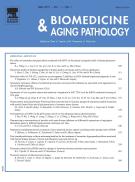Camel urine inhibits inflammatory angiogenesis in murine sponge implant angiogenesis model - 27/02/14


Abstract |
Camel urine has traditionally been used to treat cancer, but this practice awaits scientific scrutiny, in particular its role in tumor angiogenesis, the key step involved in tumor growth and metastasis. We aimed to investigate the effects of camel urine on key components of inflammatory angiogenesis in the murine cannulated sponge implant angiogenesis model. Polyester-polyurethane sponges, used as a framework for fibrovascular tissue growth, were implanted in Swiss albino mice and camel urine (25, 50 and 100mg/kg/day) was administered for 14days through installed cannula. The implants, collected at day 14 post-implantation, were processed for the assessment of hemoglobin (Hb), myeloperoxidase (MPO), N-acetylglucosaminidase (NAG) and collagen, which were used as indices for angiogenesis, neutrophil and macrophage accumulation and extracellular matrix deposition, respectively. Relevant inflammatory, angiogenic and fibrogenic cytokines were also determined. Camel urine treatment attenuated the main components of the fibrovascular tissue, wet weight, vascularization (Hb content), macrophage recruitment (NAG activity), collagen deposition and the levels of vascular endothelial growth factor (VEGF), interleukin (IL)-1β, IL-6, IL-17, tumor necrosis factor (TNF)-α and transforming growth factor (TGF-β). A regulatory function of camel urine on multiple parameters of the main components of inflammatory angiogenesis has been revealed giving insight into the potential therapeutic benefit underlying the anti-cancer actions of camel urine.
El texto completo de este artículo está disponible en PDF.Keywords : Camel urine, VEGF, Microvessel density, N-acetylglucosaminidase, Myeloperoxidase
Esquema
Vol 4 - N° 1
P. 9-16 - janvier 2014 Regresar al númeroBienvenido a EM-consulte, la referencia de los profesionales de la salud.
El acceso al texto completo de este artículo requiere una suscripción.
¿Ya suscrito a @@106933@@ revista ?

